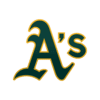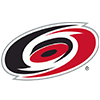The assumption was that a high BABIP for a pitcher was the result of bad luck, while a low BABIP was the result of good luck. For hitters, a high BABIP was good luck, while a low mark was bad luck.
Easy, right?
Those of us who bought into it as a tool to find improperly valued players were largely wrong, as we were completely overlooking the fact that a pitcher with a great defense behind him would have a much better chance of posting a low BABIP, since balls in play against that pitcher could be more frequently turned into outs. It overlooked the extremes at the opposite end of the defensive spectrum as well, among other things.
Even with a flawed understanding of what BABIP could and could not tell us, we may have been accidentally right -- telling our readers and listeners to steer clear of Carlos Zambrano due to his good fortune the year before, only to have his BABIP nearly repeat, while his home-run rate or walk rate soared and his ERA went through the roof.
In addition to overlooking the role of defense, we were discounting the quality of contact allowed by a pitcher. Pitchers who induced a lot of weak contact, or specifically, infield flyballs, would have been capable of sustaining a lower BABIP than their peers who didn't record as many outs that way.
With the massive increase in qualitative data that
The assumption was that a high BABIP for a pitcher was the result of bad luck, while a low BABIP was the result of good luck. For hitters, a high BABIP was good luck, while a low mark was bad luck.
Easy, right?
Those of us who bought into it as a tool to find improperly valued players were largely wrong, as we were completely overlooking the fact that a pitcher with a great defense behind him would have a much better chance of posting a low BABIP, since balls in play against that pitcher could be more frequently turned into outs. It overlooked the extremes at the opposite end of the defensive spectrum as well, among other things.
Even with a flawed understanding of what BABIP could and could not tell us, we may have been accidentally right -- telling our readers and listeners to steer clear of Carlos Zambrano due to his good fortune the year before, only to have his BABIP nearly repeat, while his home-run rate or walk rate soared and his ERA went through the roof.
In addition to overlooking the role of defense, we were discounting the quality of contact allowed by a pitcher. Pitchers who induced a lot of weak contact, or specifically, infield flyballs, would have been capable of sustaining a lower BABIP than their peers who didn't record as many outs that way.
With the massive increase in qualitative data that has become publicly available, a BABIP might be useful as a yellow flag -- something that with a year-to-year change will lead you to explore the quality of a team's defense behind a pitcher, or the type of contact that pitcher is allowing (or that a hitter is making at the plate), but it's hardly painting a complete picture.
Nevertheless, we still continue the pursuit of finding better ways to measure player performance and to predict future value. There will never be a perfect formula, which in a strange way, makes the pursuit of finding something better than what we've used in the past more fun.
Players change, for better and for worse, and for countless reasons.
I'm always looking for pockets of value, so my approach is to look at the player pool from multiple angles to see if there are individuals or types of players that the market generally misses on.
Statcast data is still relatively new. Teams haven't had it for very long, but they also have proprietary information that we do not have access to guiding their decision-making processes, which includes in-game tactical adjustments.
This week, I took a look back at the top of the xwOBA Leaderboards from the past two seasons.
Not surprisingly, FanGraphs has an excellent detailed explanation of wOBA, or weighted on-base average, which is an attempt to combine all aspects of hitting and weight them in proportion to their run value. It was developed several years ago by Tom Tango in "The Book".
Data from Statcast has allowed the bright statistical minds from MLBAM to calculate expected stats, including expected batting average (xBA), expected slugging percentage (xSLG) and expected weighted on-base average (xwOBA).
The limitations are pretty well defined by Statcast on the leaderboard page at Baseball Savant:
Expected Outcome stats help to remove defense and ballpark from the equation to express the skill shown at the moment of batted ball contact. By looking at the exit velocity and launch angle of each batted ball, a Hit Probability is assigned based on the outcomes of comparable historic balls in play. By accumulating the expected outcomes of each batted ball with actual strikeouts, walks and hit by pitches, Expected Batting Average (xBA), Expected Slugging (xSLG), and (most importantly) Expected Weighted On-Base Average (xwOBA) tell the story of a player's season based on quality of and amount of contact, not outcomes.
Using expected stats, we can compare numbers from year-to-year in search of consistency, improvement, or decline, and within seasons, we can look at actual outcomes compared to the expected ones.
Learning from our BABIP example of the past, we should not automatically assume that positive and negative differences are solely the function of good or bad luck. There are a multitude of factors that could lead to significant shifts from year-to-year, with injuries being one in particular that could shake things up in a big way.
Even with known limitations, we can attempt to use xStats as a lens to spot potentially undervalued and overvalued players.
Past performance does not guarantee future results.
In the hope of finding some of the most consistent year-to-year hitters between 2017 and 2018, I compiled a list of players whose xwOBA has been .350 or better in each of the last two seasons. It's somewhat interesting to note that Mookie Betts, who led all qualified hitters in xWOBA during his MVP-winning 2018 campaign, did not crack the .350 mark (which is roughly the 80th percentile for qualified hitters) in his previous three seasons (he narrowly missed the cut-off with still very good marks of .347, .340, .338 from 2017 back to 2015).
As stolen bases go, they're not a part of the calculation of wOBA. Thus, having players like Betts and Trea Turner falling short of my arbitrary .350 filter in one of the last two seasons doesn't mean that drafting them in the early part of the first round is inherently wrong. The value of the stolen bases on top of the everything else they do -- even if they're not among the perennial elite in this metric -- is understandably significant.
This concludes the disclaimer section of the article.
The last two pieces I've written have focused on undervalued players, using multiple sets of projections and their "agreement" about value in the player pool compared to January ADP from the NFBC.
In a similar vein, let's see if xwOBA might steer us toward another group of potentially undervalued hitters.
The table below includes 2018 xwOBA, 2017 xwOBA, and February ADP (through 2/14 drafts) from the NFBC.
| Player | 2018 | 2017 | ADP | Comment |
|---|---|---|---|---|
| Mike Trout | 0.430 | 0.426 | 1.09 | He's really good. |
| Jose Ramirez | 0.362 | 0.364 | 4.03 | Breaking/off-speed pitches crushed him in the 2H. |
| Francisco Lindor | 0.373 | 0.363 | 5.12 | Heal up soon, calf. |
| Christian Yelich | 0.410 | 0.366 | 7.36 | New baseline, or career year? |
| J.D. Martinez | 0.417 | 0.429 | 7.39 | Also really good, but you're not getting steals here. |
| Manny Machado | 0.372 | 0.366 | 15.21 | Somehow still a free agent. |
| Paul Goldschmidt | 0.383 | 0.398 | 18.73 | Steals probably aren't coming back; still mashes. |
| Bryce Harper | 0.387 | 0.395 | 19.39 | Even in a "down" fantasy year, Harper does a lot. |
| Freddie Freeman | 0.386 | 0.405 | 21.27 | Three straight .300/.400/.500 seasons; 30-HR upside. |
| Aaron Judge | 0.391 | 0.445 | 21.79 | First-round pick available in Round 2. |
| Kris Bryant | 0.350 | 0.382 | 34.85 | Shoulder injury explains drop-off last season. |
| Anthony Rizzo | 0.366 | 0.396 | 39.21 | Recovered nicely from early back injury. |
| Anthony Rendon | 0.388 | 0.378 | 46.76 | Elite hitter, slightly less than elite price tag. |
| Khris Davis | 0.375 | 0.393 | 48.45 | Carrying peak Nelson Cruz draft price now. |
| Eugenio Suarez | 0.373 | 0.356 | 55.21 | Undervalued last year, full price now in rising lineup. |
| Tommy Pham | 0.377 | 0.385 | 64.06 | Late surge in Tampa was very encouraging. |
| Joey Votto | 0.390 | 0.419 | 69.09 | Back injury might have sapped power last season. |
| Marcell Ozuna | 0.354 | 0.372 | 75.88 | Another case where an injury (shoulder) was a factor. |
| Matt Carpenter | 0.387 | 0.383 | 77.09 | Early xStats pointed to big bounce back last season. |
| Corey Seager | 0.376 | 0.386 | 87.94 | Huge bargain right now if he's healthy. |
| Jose Abreu | 0.357 | 0.366 | 88.45 | Decline in progress? The floor still looks pretty good. |
| Nelson Cruz | 0.392 | 0.403 | 96.45 | AVG floor sinking, but still a bargain. |
| Justin Upton | 0.352 | 0.364 | 97.88 | Decline phase is here, but he looks underpriced. |
| Nick Castellanos | 0.368 | 0.376 | 98.42 | Lineup context is bad, but he's very good. |
| Matt Olson | 0.356 | 0.383 | 109.18 | Wasn't going to break the league for a full season. |
| Justin Turner | 0.385 | 0.404 | 111.45 | It's not at all surprising to me that he's on this list. |
| Joey Gallo | 0.366 | 0.377 | 113.12 | Expecting plenty of hard contact when he connects. |
| Aaron Hicks | 0.367 | 0.350 | 125.09 | What could he do with a completely healthy season? |
| Edwin Encarnacion | 0.358 | 0.394 | 127.88 | Still viable with price well outside Top 100. |
| Robinson Cano | 0.377 | 0.358 | 129.82 | More steady than he probably gets credit for. |
| Andrew McCutchen | 0.361 | 0.368 | 143.00 | Probably getting overlooked because of SF effect. |
| Miguel Cabrera | 0.371 | 0.379 | 173.36 | Here's to hoping health is less of an issue in 2019. |
| Ryan Braun | 0.368 | 0.351 | 203.88 | Hit a lot of balls very hard last season; found gloves. |
| Jesse Winker | 0.363 | 0.353 | 213.03 | 15-20 homers in a full season are entirely possible. |
| Jose Martinez | 0.377 | 0.420 | 230.33 | Cheap enough to gamble that PT opens up for him. |
| Shin-Soo Choo | 0.360 | 0.369 | 271.15 | Every lens I look through sees him as undervalued. |
| Ryan Zimmerman | 0.371 | 0.386 | 316.00 | How much will Matt Adams push him for PT? |
| Matt Kemp | 0.362 | 0.353 | 323.00 | Bad contract skews perception of what Kemp can do. |
| Kendrys Morales | 0.373 | 0.360 | 407.52 | Actually unlucky, or is something else causing lag? |
| Mitch Moreland | 0.351 | 0.371 | 438.42 | Not a bad emergency CI option in the endgame. |
| Ji-Man Choi | 0.352 | 0.392 | 492.06 | UT-only in many leagues, but worth a flyer. |
The comments in the table were included to offer up a least a passing thought on each player in this group.
If you have any doubts about which hitter you want to take at No. 3 overall with Trout and Betts likely off the board, J.D. Martinez looks like the safest possible option in that spot.
Manny Machado is an excellent player. I'm struggling to figure out why the market prefers him over Paul Goldschmidt and Freddie Freeman at the moment, and I'm going to be ecstatic any time Aaron Judge is on the board for me in the first half of Round 2. Of those four players, Judge is the one I like the most in 2019.
How much will Bryce Harper's price rise if he lands in Philadelphia, with the benefit of a nice park boost at home for half of his games?
I still like Kris Bryant, but is he less-risky from a health perspective than Anthony Rendon, who is often chosen a round later? The power ceiling is higher from a healthy Bryant, but everything else might be equal with those two third-base options.
With more than a month before their season begins, the Dodgers have Corey Seager doing all baseball activities other than making throws across the diamond as he completes the final stages of rehab from Tommy John surgery and a hip procedure. Don't be surprised if his ADP creeps up 15-20 picks between now and the end of March if he continues to trend toward being 100 percent ready for Opening Day.
Ji-Man Choi played a lot of games at first base at Triple-A last season, but he's UT-only in most leagues to begin 2019. The Rays might elect to use him mostly in a DH platoon with Avisail Garcia, but he's a classic bat that simply needs an opportunity after producing a 112 wRC+ over parts of three seasons with the Angels, Yankees, Brewers and Rays since the start of 2016. Out of 480 qualified hitters (min. 50 plate appearances), Choi was tied for 56h in Barrel Rate, and ranked in the top 100 in average exit velocity in 2018. In leagues that don't run 400 picks deep, he's a name to consider as a streaming option in daily formats when the Rays face a right-handed starter, or at least a name to file away for a potential early-season waiver pickup.



































